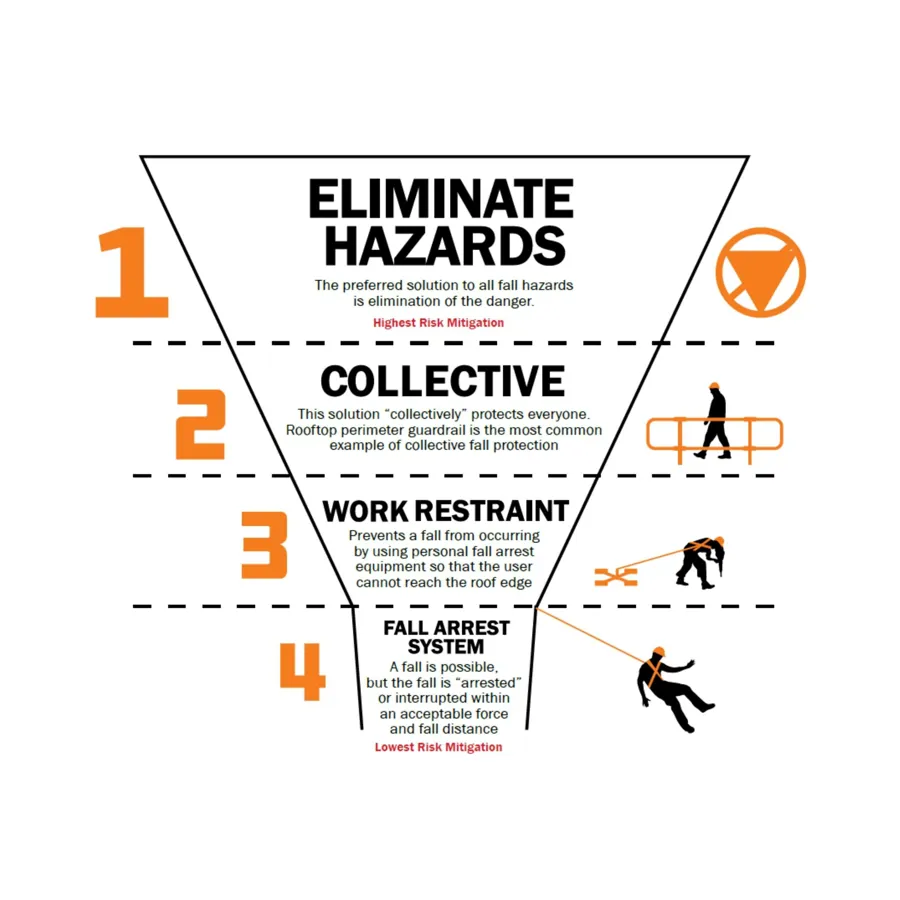
You are visiting the Canada Kee Safety website from United States. Would you like to go to the United States site?
To use an old expression, fall protection equipment comes in many shapes and sizes. From top to bottom (another old favorite), it can be a rooftop tie-off with an anchorage system down to a safety gate at a basement accessway.
The latest data from the National Work Injury/Disease Statistic Program (NWISP) reports that in 2021 there were 45,468 accepted lost time claims due to falls in the workplace. “Accepted” does not count all falls reported. It does not count unreported falls. It does not count falls outside the workplace; for example, a person may trip on the steps walking into a public building.
Could that hypothetical fall have been prevented by the person using a handrail? Handrails are a specific type of fall protection that still has some variety in shapes and sizes; however, they should adhere to specific guidelines and regulations.

The terms handrail and guardrail are often used interchangeably. Sometimes this is acceptable because a guardrail can also have a handrail in a safety railing system. However, there is an essential distinction between the two.
A guardrail is a safety barrier. It provides fall protection if installed on an elevated surface, like a mezzanine or rooftop. A guardrail also restricts access, such as a railing set that helps keep people away from vehicular traffic or unauthorized personnel away from machinery.
A handrail means what it says. Handrails are railings intended to be grasped by hand to provide guidance and support. They help people traverse walkways, stairs, and ramps.

For strength, durability, and ease of installation, pipe-fitted handrails and guardrails are recommended for commercial, institutional, and industrial facilities. Aluminum railing systems are lightweight yet strong and corrosion-resistant. Heavy-duty steel railings can be galvanized for corrosion resistance. Since the metal rails are connected by pipe fittings, no welding, threading, drilling, or tapping is necessary.
A guardrail has a top rail, intermediate rail, and bottom rail or toe board supported by posts affixed by bases. Guardrails can also have infill panels, pickets, or balusters for added protection and decorative purposes. The top rail of the guardrail can also be considered a handrail if it meets specific requirements.
The Ontario Building Code has detailed requirements regarding handrails. A few of the main standards include:
The National Research Council of Canada regularly evaluates and recommends code requirements for national, provincial, territorial, and local governments to consider adopting. The agency recent reviewed handrail requirements.

To comply with the Americans for Disabilities Act (ADA), handrails must be “smooth” without any protrusions. Pipe-fitted handrails with either internal couplings or cradle fittings meet this standard. This applies whether the handrails are installed on walkways, stairs, or wheelchair access ramps.
Handrails and guardrails both offer fall protection. The difference is that guardrails provide a barrier, and handrails are for a person to hold onto to avoid falling.
Handrails must be installed on all stairways and ramps. When considering what makes a workplace safer, they should also be installed on level ground as part of a guardrail system or a walkway.

A truly comprehensive rooftop solution follows the Hierarchy of Fall Protection. An expert starts by inspecting the roof site for potential fall hazards. From there, a complete system solution and recommendations are created that descend down the four levels of the hierarchy, from simple, sensible approaches for eliminating risks all the way down to lifesaving personal protection systems.
Collective Systems require no additional training to use. Fall Restraint and Fall Arrest Systems both require a high level of user competency, training and additional inspection to be used properly.